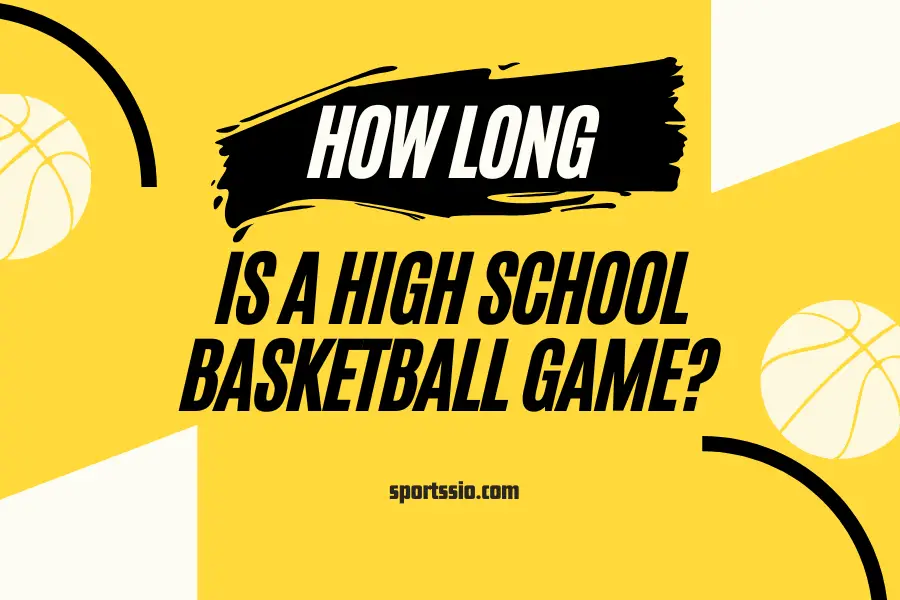
How long is a high school basketball game? For newbies to this fascinating sport, this must be the first question in their minds. Beyond the cheers and excitement, it is important to know how long these basketball games consist so that we can prepare the best for them.
In this exploration, we will find the answer and explore factors affecting the game time duration. Scroll down for more helpful information!
How Long Is A High School Basketball Game?
A high school basketball game typically lasts around 32 minutes of actual playing time, and consists of four 8-minute quarters for both varsity and junior varsity levels. Depending on variables like the number of fouls, timeouts, and game interruptions, a basketball game often lasts 1.5 to 2.5 hours.
Here’s a breakdown of the time:
- Playing time: The game is divided into four 8-minute quarters, lasting for 32 minutes.
- Stoppages: There are stoppages for fouls, free throws, timeouts, and out-of-bounds plays. These stoppages are not counted in the official game time.
- Halftime: There is a 10 or 15-minute halftime intermission between the second and third quarters.
- Total time: Including halftime break and stoppages in play, a high school basketball game can last anywhere from 1.5 to 2 hours.
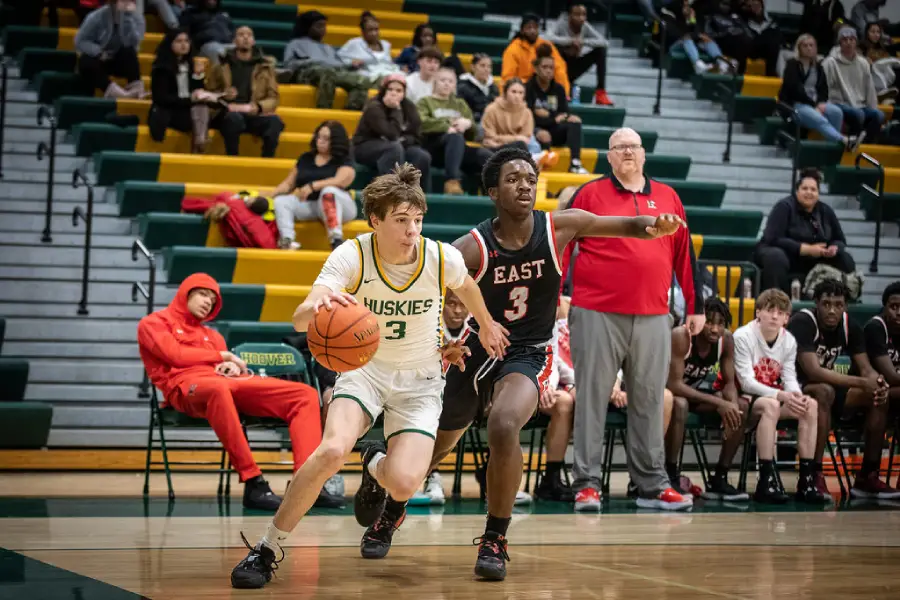
The Format Of A High School Basketball Game
High school basketball games are like a small version of sports competitions. They require a mix of strategy, teamwork, and physical abilities within a set plan. Understanding how it works helps you enjoy the game fully, appreciating its flow and exciting moments during the long basketball season.
Here, let’s take a closer look at the main parts of a high school basketball game consist:
Four 8-Minute Quarters
A high school basketball game is divided into 4 equal segments called quarters, each lasting 8 minutes of actual playing time. This creates urgency, requiring players to maintain peak performance in shorter bursts compared to longer games seen at professional levels.
These four 8-minute quarters combine for 32 minutes of on-court action, ensuring a fast-paced and exciting viewing experience.
Stoppages in Play
Unlike a track race with a continuously running clock, basketball games consist of strategic stoppages in play whenever a whistle blows or a violation occurs. These brief pauses serve several purposes:
- Free throws and inbound plays: Fouls necessitate stopping the clock to allow the fouled player to take free throws or enable the team awarded the foul to initiate an inbound play.
- Tactical adjustments and timeout: Interruptions in play allow coaches to utilize timeout. Within these breaks, coaches can gather their players, provide new strategies or adjustments tailored to the game’s dynamics, and ensure everyone is on the same page.
- Out-of-bounds situations: If the ball goes out of bounds, the clock is automatically paused. This will let a player throw the ball back into play from designated spots on the court. These brief breaks help maintain control and prevent the game from becoming chaotic.
Halftime Break
After two fast-paced 8-minute quarters, everyone gets a halftime break lasting 10 or 15 minutes. This is a chance for the players to rest, grab water, and loosen up their muscles to prepare for the second half.
Coaches normally use this valuable time to look at what happened in the first half, figure out how to beat the other team, and make any changes to their plan.
It is also fun for the fans because there’s usually music, performances, highlights of big plays, or even contests to keep the crowd excited.
Overtime Periods
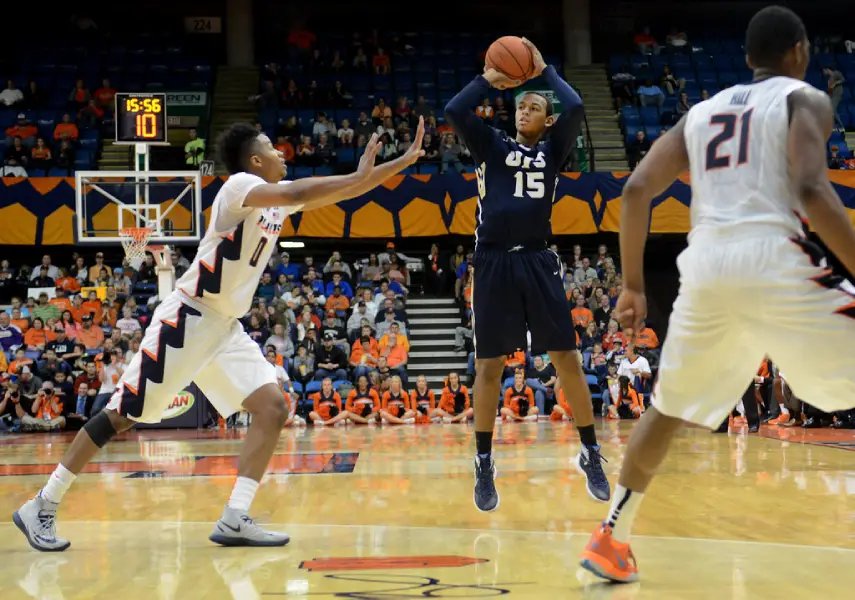
Sometimes, the game can be close. Therefore, the score might be tied after the four regular quarters. That’s when things get exciting! In this scenario, the game will go into overtime, like an extra period added on.
Each overtime period lasts 4 minutes, and the clock only stops for fouls and timeouts. This makes it super intense because every time a team has the ball (possession), every point they score matters!
Depending on the league rules, there might be more than one overtime period. But no matter how many there are, each one is like a final battle where players have to give it their all to win the match.
Basketball games in high school are surprisingly comparable to those in youth leagues. The entire game lasts roughly 1.5 hours, with each of the four quarters lasting 8 minutes.
Factors Affecting the Length of Basketball Games
Several factors affect the start time and duration of a basketball game. Find out now!
Fouls, Injuries, and Free Throws
Fouls: Fouls are like violations of the game’s rules. These can include pushing or holding an opponent (illegal contact), traveling (taking too many steps without dribbling), or double-dribbling (picking up the ball after dribbling, then dribbling again).
Whenever a foul happens, the game stops so the team that got fouled can shoot free throws. The clock doesn’t start again until the free throw is made. Lots of fouls can slow things down.
Injuries: Sometimes, players get hurt during the game. If someone gets hurt badly, the clock might stop for a long time while trainers check on them. Serious injuries can pause the game until the player leaves the court safely.
A famous example of a long injury pause in the NBA is Kevin Durant’s Achilles tear in the 2019 Finals. The seriousness of the injury caused a lengthy stoppage as he received medical attention and left the court, impacting the game’s flow.
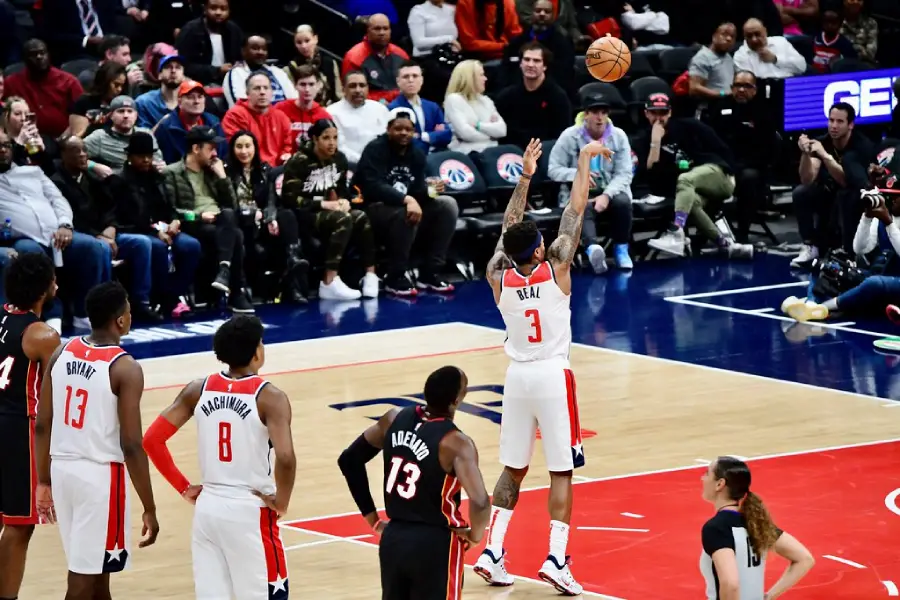
Halftime
Halftime provides a valuable break for players to rest, rehydrate, and strategize. Coaches use this time to analyze the first half’s performance, adjust their game plan, and motivate their teams.
While this break is crucial for maintaining player safety and competitive fairness, it adds a solid 10 or 15 minutes to the overall duration of the game.
Shot Clock
This 24-second shot clock isn’t affecting overall length, but it’s worth mentioning. This crucial rule limits a team’s time to attempt to shoot once they gain possession of the ball.
The shot clock resets to 24 seconds with each successful shot or rebound, preventing teams from holding the ball too long or trying to slow the game’s pace.
Timeout
Each team gets a certain number of timeouts they can use during the game. This is a chance for team members to discuss with each other, draw plays on a board, or take a quick breather.
The clock stops during timeout. Although each is only a minute or so, the game can be longer if a team uses all its timeouts in a row.
Replay Reviews
Nowadays, referees can watch replays of close calls on a video screen. This ensures the right decision is made, but it can also take a few minutes, especially in a close game with many fouls or arguments about calls.
While these replays are important for fairness, they can frustrate fans and players waiting for the game to resume.
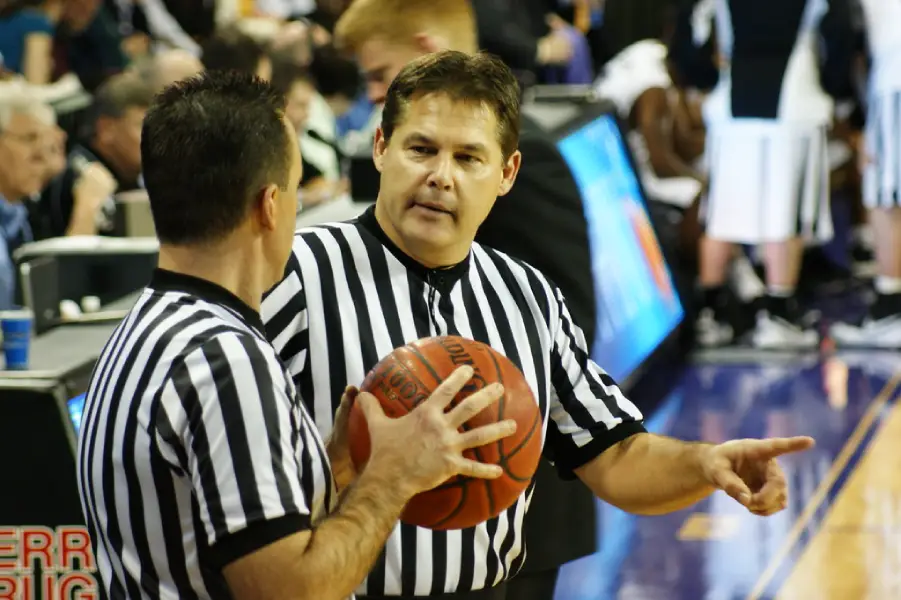
Basketball Length Comparison At Each Level
How long basketball games last differs at different levels. Check this out!
NBA
NBA games are the longest, with 48 minutes of actual playing time spread across four 12-minute quarters. An NBA game is expected to last around from 2 to 2.5 hours.
NCAA
Both NCAA Men’s and Women’s basketball games last 40 minutes, but the quarter breakdown differs. Men’s games have two 20-minute halves, while women’s have four 10-minute quarters. These games typically last 1.5 to 2 hours.
EuroLeague
Like NCAA Women’s games, each EuroLeague match contains four 10-minute quarters and lasts 1.5 to 2 hours.
Junior High
Junior high basketball shortens things to 32 minutes of playing time, divided into four 8-minute quarters. Stoppages and a shorter halftime break keep the total game time between 1 and 1.5 hours.
Youth and Recreational Leagues
For the youngest players in youth and recreational leagues, game lengths can vary significantly depending on the age group and league rules. Playing time falls between 24 to 32 minutes of playing time, depending on age group and league rules. Therefore, the total game time is around 1 to 1.5 hours.
| Level | Playing time | Total time | Notes |
| NBA | 48 minutes (4 quarters of 12 minutes each) | 2 – 2.5 hours | Includes stoppages in play, timeout, and halftime. |
| NCAA Men’s | 40 minutes (2 halves of 20 minutes each) | 1.5 – 2 hours | Includes stoppages in play, timeout, and halftime. It may vary slightly depending on conference rules. |
| NCAA Women’s | 40 minutes (4 quarters of 10 minutes each) | 1.5 – 2 hours | Includes stoppages in play, timeout, and halftime. |
| EuroLeague | 40 minutes (4 quarters of 10 minutes each) | 1.5 – 2 hours | Includes stoppages in play, timeout, and halftime. |
| Junior High | 32 minutes (4 quarters of 8 minutes each) | 1 – 1.5 hours | Includes stoppages in play, timeout, and halftime (usually shorter than high school) |
| Youth & Recreational Leagues | Varies (often 24-32 minutes) | 1 – 1.5 hours | Playing time can vary significantly depending on age group and league rules. Often, halftime is shorter or eliminated for younger players. |
Conclusion
How long is a high school basketball game? The core playing time is a concise 32 minutes, divided into four equal 8-minute quarters.
However, the actual duration can extend slightly beyond this due to various factors. Understanding the elements like free throws, halftime breaks, and timeouts adds to the overall experience, making each game a dynamic and thrilling event!
